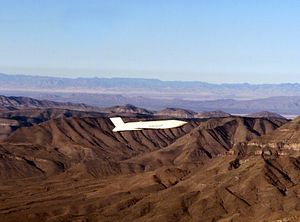The B-52H long-range heavy bomber will be armed with Lockheed Martin’s AGM-158B Joint Air-to-Surface Standoff Missile – Extended Range (JASSM-ER) in a deal announced this November estimated to be worth $9.1 million, Flight Global reports.
According to the article, the B-52H long-range heavy bomber will be outfitted with a new digitized rotary launcher to carry the turbofan engine-powered cruise missile internally as well as externally on its pylons.
The B-52H bomber is already configured to carry the shorter-range standard JASSM on its pylons. Adding the extended range variant will more than double the bomber’s JASSM strike distance to 500 nautical miles (926 kilometers), Flight Global explains.
“JASSM-ER has more than two-and-a-half times the range of the baseline AGM-158A JASSM, meaning it can be launched from outside of defended airspace and the coverage of long-range surface-to-air missiles, and is intended for use against high-value, well-fortified, fixed and re-locatable targets,” according to IHS Jane’s Defense Weekly.
The new 2,000-pound conventional, air-to-ground, precision standoff missile is powered by the Williams International F107-WR-105 turbofan engine and armed with a penetrating blast-fragmentation warhead. The U.S. Air Force has approved full-rate production of the new missile in December 2014. Under a October 2015 contract Lockheed Martin will build 140 baseline JASSMs and 140 JASSM-ER missiles.
“JASSM and JASSM-ER have an important role in the United States’ and its allied partners’ long-term strategic defense plans,” said Jason Denney, program director of long-range strike systems at Lockheed Martin Missiles and Fire Control in a press release. “The missiles (…) will provide an effective and more affordable capability against Anti-Access/Area Denial threats, thus providing a strategic deterrent for U.S. and international warfighters.”
The integration of the JASSM-ER on the B-52H bomber should be completed by 2018. According to Flight Global, “Boeing-led Combat Network Communications Technology improvement will further allow B-52s to update their missions plans via satellite and retarget weapons in flight – as most other combat aircraft have been doing for decades.”
Dozens of B-52H bombers are currently stripped of their nuclear weapons as part of a new strategic arms limitation agreement with Russia and reassigned conventional warfighting roles. Only the H model of the 54-year-old aircraft is still in service.
Among other things, the B-52H can perform strategic attack, close-air support, air interdiction, offensive counter-air and maritime operations, according to the U.S. Air Force website. The aircraft, with an unrefueled combat range in excess of 8,800 miles (14,080 kilometers), is expected to remain in service at least until the 2040 when it will be replaced by the new Long-Range Strike Bomber (LRS-B).

































